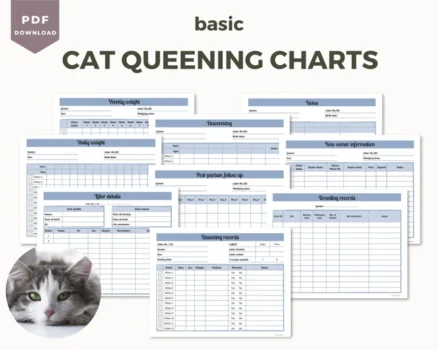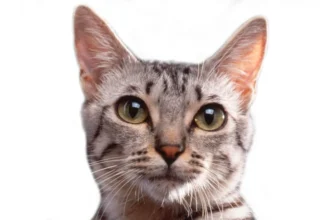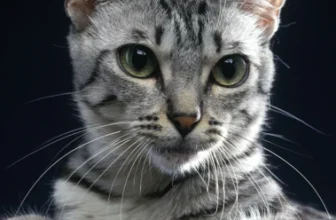As a cat breeder, ensuring the health and genetic quality of your breed is of utmost importance. California spangled cats are a unique and beautiful breed that requires careful breeding practices to maintain their unique characteristics. Understanding pedigree charts is a critical part of breeding California spangled cats, as it helps breeders make informed decisions about choosing breeding cats and minimizing the risk of inherited health conditions. In this article, we will dive into the intricacies of pedigree charts and how they relate to breeding California spangled cats. So, let’s explore the world of pedigree charts and see how they can be used to preserve and improve this beloved cat breed.
What Is a Pedigree Chart?
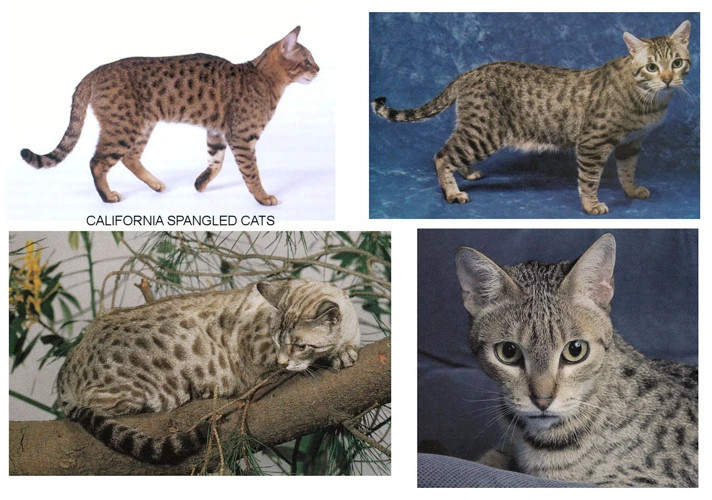
Have you ever heard of a pedigree chart? This type of chart may be familiar to some in the breeding world, but it can be a mystery to others. In short, a pedigree chart is a visual representation of a cat’s family tree, used to track genetic traits and lineage. Understanding this chart can provide valuable insights into the genetic health and diversity of a breeding population, especially for breed-specific cats like the California Spangled Cat. In this section, we will dive deeper into what a pedigree chart is and how it can impact breeding decisions. For more information on California Spangled Cat genetics, breeding tips, traits, and potential health risks, check out our related articles below.
Definition of a Pedigree Chart
A pedigree chart, also known as a genealogy chart, is a diagram that represents the genetic history and familial relationships of animals, specifically in the case of breeding California Spangled Cats. These charts often display the ancestors, siblings, and offspring of a particular cat of interest. The pedigree chart is a crucial tool in breeding as it provides insight into an animal’s genetic makeup through its ancestors’ and descendants’ traits.
In a pedigree chart, each cat is typically represented by a symbol, such as a square for a male or a circle for a female. Arrows show the direction of breeding from parent to offspring, while vertical lines connect the parents. Different symbols or colors may indicate specific genetic traits, health conditions, or inbreeding.
Pedigree charts can range from simple to complex, depending on the level of detail needed. For example, a simple pedigree chart may only show the cat’s parents and grandparents, while a more detailed chart may include several generations of ancestors and their characteristics.
Understanding pedigree charts is essential for breeders who aim to produce healthy California Spangled Cats with desirable traits and characteristics. By analyzing the chart, breeders can identify any potential genetic issues, weaknesses, or risks and make informed decisions about breeding. Properly analyzing a pedigree chart can also help breeders ensure genetic diversity, which is crucial for maintaining a healthy and thriving breed.
A pedigree chart is a valuable tool for breeders as they plan and execute their breeding programs for California Spangled Cats. By understanding the principles of genetic inheritance, analyzing the patterns on a pedigree chart, and using available resources such as genetic testing, breeders can produce healthy cats that meet the breed’s standards while also improving it for future generations.
Why Pedigree Chart Matters for Breeding California Spangled Cats
When it comes to breeding California Spangled cats, understanding pedigree charts is crucial. Pedigree charts provide a helpful visual representation of an animal’s genetic history and can assist breeders in making informed decisions about which cats to breed. By examining a cat’s pedigree chart, breeders can identify desirable traits and breeding patterns, as well as potential genetic disorders or other health issues that may affect the breed.
A pedigree chart is like a family tree, but for cats. It displays a cat’s ancestors and their relationships over multiple generations. By analyzing a pedigree chart of a California Spangled cat, breeders can determine the genetic makeup of the cat and what traits it is likely to pass down to future generations. Inbreeding and genetic diversity can also be analyzed using pedigree charts, which is essential for successful breeding and maintaining the health of the breed.
Using pedigree charts when breeding California Spangled cats can minimize the chances of inbreeding and genetic abnormalities. By tracing a cat’s ancestry, breeders can identify any potential health issues or hereditary disorders that could be passed down to future offspring. This makes it possible to make more informed decisions regarding which cats to breed and which to avoid.
Pedigree charts also help breeders ensure that they are maintaining the desired breeding traits across multiple generations of California Spangled cats. For instance, if a breeder is trying to maintain a specific coat color or pattern, they can use the pedigree chart to determine which cats are more likely to produce kittens with that particular color or pattern.
Pedigree charts play a significant role in the breeding of California Spangled cats. They help breeders make informed decisions about mating pairs, avoid potential genetic health problems, and maintain the desirable traits of the breed. It is essential to understand and analyze pedigree charts when breeding California Spangled cats to ensure the long-term health and viability of this unique breed. To learn more about the genetics of California Spangled cats and genetic testing, check out California Spangled Cat Genetics.
How to Read a Pedigree Chart?
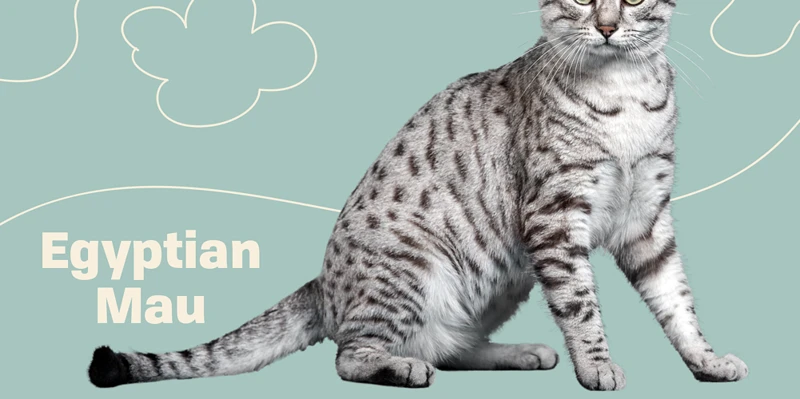
Understanding the pedigree chart is essential for successful breeding of California Spangled Cats. A pedigree chart is a roadmap of the genetic history of a feline. It shows the lineage of the cat and the ancestry of its parents, grandparents, and beyond. Analyzing the pedigree chart of a California Spangled Cat can provide valuable insight into its health, breeding potential, and genetic traits. In this section, we will describe the basic elements of a pedigree chart, interpretation of symbols, and understanding inbreeding and genetic diversity. Let’s dive into the intricacies of how to read a pedigree chart and uncover the secrets it holds for breeding healthy and genetically sound California Spangled Cats. To learn more useful tips on California Spangled Cat breeding, check out these California Spangled cat breeding tips.For information on genetic testing for California Spangled Cats, visit our guide on California Spangled cat genetic testing .
Basic Elements of a Pedigree Chart
Pedigree charts are essential tools for cat breeders, especially those working with California Spangled Cats. These charts contain several basic elements that provide vital information for analyzing the genetic history of a cat. Here are the basic elements of a pedigree chart:
- Names: Pedigree charts show the names of each cat in the lineage. Knowing the names of a cat’s parents, grandparents, and so on can help breeders predict the traits and characteristics of the kittens produced from a particular breeding pair.
- Gender: The gender of each cat is indicated on the pedigree chart. Breeders need to know the gender of each cat to determine breeding pairs and the likelihood of certain traits being passed down.
- Breed: The breed of each cat is listed on the pedigree chart. This information is essential for breeders who want to maintain the breed standard and produce healthy, predictable litters.
- Registration Numbers: Each cat in a pedigree chart should have a unique registration number. Registration numbers help breeders and other professionals identify cats and track their lineage.
- Color and Markings: The color and markings of each cat are indicated on the pedigree chart. This information helps breeders select cats for breeding with desirable coat colors and patterns.
- Health Information: Some pedigree charts include health information for each cat in the lineage. This information can alert breeders to potential health problems or the likelihood of certain genetic conditions being passed down.
Understanding these basic elements and how they relate to each other is crucial for analyzing pedigree charts and making informed breeding decisions. By paying close attention to these elements, breeders can produce healthy, high-quality California Spangled Cat litters while maintaining the breed’s standards.
How to Interpret Symbols in a Pedigree Chart
Understanding the symbols in a pedigree chart is crucial for interpreting the information provided in the chart accurately. Here’s a breakdown of the symbols commonly used in pedigree charts for breeding California Spangled Cats:
| Symbol | Description |
|---|---|
| Square | Representing a male cat |
| Circle | Representing a female cat |
| Filled-In Shape | Representing a cat that expresses the trait in question |
| Half-Filled Shape | Representing a cat that carries one copy of the trait in question but does not express it |
| Empty Shape | Representing a cat that does not have the trait in question and does not carry it |
| Horizontal Line | Connecting the parents of the offspring. The line between the parents is horizontal and above the offspring’s symbol. |
| Vertical Line | Connecting the parents and the offspring. The line is vertical and below the offspring’s symbol. |
| Arrow | Pointing to a cat indicating the cat of interest in the pedigree. |
| Double Horizontal Line | Connecting parents that are related, indicating consanguinity or inbreeding. |
It’s also important to note that if there are multiple marriages or litters, they can be represented in a pedigree chart by connecting additional lines to the respective parent’s symbol. Additionally, if a cat’s information is unknown, their symbol can be represented by a question mark.
Having a thorough understanding of these symbols and how they are used in pedigree charts can help breeders make informed decisions when selecting breeding pairs and understanding the risk of certain genetic traits being passed down to offspring.
Understanding Inbreeding and Genetic Diversity in Pedigree Charts
Inbreeding and genetic diversity are crucial factors to consider when using pedigree charts for breeding California Spangled cats. Inbreeding refers to the mating of closely related cats, which can lead to the amplification of negative traits and genetic disorders. Pedigree charts can be used to identify potential risks of inbreeding by tracing common ancestors and assessing the level of relatedness between cats.
| Inbreeding Coefficient | Relatedness | Explanation |
|---|---|---|
| 0% | Not related | Cats have completely different ancestors and gene pools |
| ≤ 6.25% | Half-siblings or first cousins | Cats share one common grandparent |
| ≤ 12.5% | Full siblings or nieces/nephews and uncles/aunts | Cats share one common parent |
| ≤ 25% | First cousins once removed or half-siblings with grandparents in common | Cats share one common great-grandparent |
Genetic diversity, on the other hand, refers to the variety of genes within a population. A diverse gene pool is essential for the health and vitality of the breed, as it increases the likelihood of favorable genetic traits being passed down to offspring. However, focusing too much on preserving genetic diversity can also pose risks to the breed. If strict outcrossing policies are implemented, it can lead to a dilution of desirable traits and reduce the consistency of the breed standard.
When creating a pedigree chart for breeding California Spangled cats, it is important to strike a balance between maintaining genetic diversity and avoiding inbreeding. This can be achieved by carefully selecting breeding cats with diverse bloodlines and keeping track of their pedigree histories. A professional breeder or geneticist can also provide valuable insight on how to optimize genetic diversity while minimizing the risks of inbreeding.
Creating a Pedigree Chart for Breeding California Spangled Cats

Breeding California Spangled Cats is a complex process that requires meticulous planning and a profound understanding of genetics. Creating a pedigree chart is an essential step in this process as it provides a visual representation of a cat’s genetic lineage. To ensure that the breed’s characteristics are preserved and improved upon over time, breeders must be deliberate and strategic in selecting cats with desirable genetic traits. In this section, we will explore the steps involved in creating a pedigree chart for breeding California Spangled Cats and the different resources available to breeders for this task.
Choosing the Right Breeding Cats
When it comes to breeding California Spangled cats, choosing the right cats to breed is crucial for maintaining the genetic health and quality of the breed. Here are some factors to consider when selecting breeding cats:
- Health: Choose cats that are free of genetic health conditions and have a good overall health history. Additionally, make sure that both cats have undergone a thorough veterinary examination before breeding.
- Temperament: The temperament of the cats is important for producing kittens that are easy to handle and make good companions. Make sure both cats have a friendly and gentle disposition.
- Physical Attributes: Select cats that have desirable physical traits that conform to the breed standard. This includes the coat color and texture, eye color, and body shape.
- Pedigree: Look for cats that have a strong pedigree with proven ancestry of healthy and successful breeding. This information can be obtained through a detailed pedigree chart and by researching the lineage of the cats.
- Breeding Goals: Consider your breeding goals and what you hope to achieve through the breeding process. For example, if you want to produce kittens with a specific color or pattern, choose cats that have that trait in their lineage.
By taking these factors into consideration, you can ensure that you are choosing the best possible cats to breed and improve the genetic quality of the California Spangled cat breed. However, it’s important to keep in mind that breeding should only be done by experienced and knowledgeable breeders who understand the complexities of genetic inheritance and the potential risks involved.
Collecting and Verifying Pedigree Information
In order to create an accurate and reliable pedigree chart for breeding California Spangled cats, it is crucial to collect and verify pedigree information from the breeding cats. This process involves several steps which include:
- Asking for Pedigree Certificates: The first step is to ask the current breeders for pedigree certificates of the cats you are interested in breeding. These certificates will contain information about the cat’s bloodline, ancestors, and genetic traits which will be used to create the pedigree chart.
- Examining the Certificates: Once you receive the certificates, examine them carefully to ensure that they are genuine and accurate. Check for any spelling errors or discrepancies in the information provided. Make sure that the certificate matches the cat’s physical appearance and characteristics.
- Contacting the Breeders: It is important to contact the current breeders and ask them any questions you may have about the cat’s pedigree. This will help you gather more information about the cat’s family history and genetic traits.
- Obtaining DNA Tests: DNA testing can help verify the cat’s genetic traits and prevent any accidental inbreeding. It is recommended to obtain DNA tests for all breeding cats to ensure genetic diversity and healthy offspring.
- Record Keeping: Keep accurate and up-to-date records of the pedigree information collected for each breeding cat. This will help you keep track of the genetic traits and health conditions of the offspring.
It’s important to ensure that the pedigree information is accurate and verifiable to avoid any issues in breeding California Spangled cats.
Using Online Pedigree Chart Generators and Software
Online pedigree chart generators and software can be great tools for breeders who want to create pedigrees for their California Spangled cats. These tools can be found easily by searching through the internet. Here are some of the benefits of using online pedigree chart generators and software:
- Easy to Use: Unlike paper-based pedigree charts, online pedigree chart generators and software are easy to use and navigate. These tools usually provide a user-friendly interface that enables breeders to input pedigree information and generate a chart effortlessly.
- Time-Saving: Online pedigree chart generators and software can save breeders time compared to creating pedigree charts manually. With just a few clicks, breeders can generate a pedigree chart without having to spend hours and hours compiling the information and drawing the chart by hand.
- Professional Look: Using online pedigree chart generators and software will ensure that the resulting pedigree chart has a professional look. These tools usually have predefined templates and styles that make the chart easy to read and understand.
- Error-Free: Online pedigree chart generators and software are less prone to errors compared to the manual method. These tools typically have built-in automated checks that can identify inconsistencies and mistakes in the pedigree information entered.
- Customizable: Many online pedigree chart generators and software allow breeders to customize the charts. They can add specific information they need, change the layout of the chart, and modify the color schemes and fonts to suit their preferences.
However, it’s essential to note that not all online pedigree chart generators and software are created equal. Some may not have user-friendly interfaces, and others may not be compatible with the information available to the breeder. It’s essential to research the different options available and choose the one that is best suited to the breeder’s needs.
Consulting with a Professional Breeder or Geneticist
One of the most important steps in creating a reliable pedigree chart for breeding California Spangled Cats is consulting with a professional breeder or geneticist. They have extensive knowledge and expertise on the breeding process and can provide valuable insights into selecting the right cats for breeding, analyzing pedigrees, and identifying potential genetic issues.
Benefits of Consulting with a Professional Breeder or Geneticist
There are several benefits to consulting with a professional breeder or geneticist. First, they can help you select the right cats for breeding based on their pedigree, physical attributes, and health history. This is important for maintaining genetic diversity and avoiding the negative effects of inbreeding.
Second, a breeder or geneticist can assist with analyzing pedigrees and identifying any potential genetic issues or inherited health conditions. They may recommend additional health screenings or genetic testing to ensure the health and quality of the breed.
Finally, working with a professional also provides a great opportunity to learn more about the breeding process and get advice on best practices, such as managing breeding programs and record-keeping.
How to Find a Professional Breeder or Geneticist
Finding a professional breeder or geneticist can be done through various channels. One option is to attend cat shows or breeders’ exhibitions and network with other breeders and specialists in the field. Online directories and referral services are also available, such as the Cat Fanciers’ Association and The International Cat Association.
Before consulting with a breeder or geneticist, it is essential to research their credentials, experience, and reputation. Look for someone with a solid track record of producing high-quality California Spangled Cats that conform to breed standards and demonstrate good health.
Costs and Considerations
Consulting with a professional breeder or geneticist typically incurs some costs, but it is an investment that pays off in the long term. Prices vary based on the consultant’s experience and expertise, the scope of the project, and the location.
When hiring a consultant, be sure to establish clear expectations regarding the project goals, timeline, and budget. It is also important to communicate any concerns or questions you may have throughout the process to ensure that the breeding program is successful and meets your standards.
Consulting with a professional breeder or geneticist is an essential step in creating a reliable pedigree chart for breeding California Spangled Cats. Their knowledge, expertise, and guidance can help improve the genetic quality and health of the breed, while also providing valuable education and advice for improving your breeding program.
Benefits of Using Pedigree Charts in Breeding California Spangled Cats
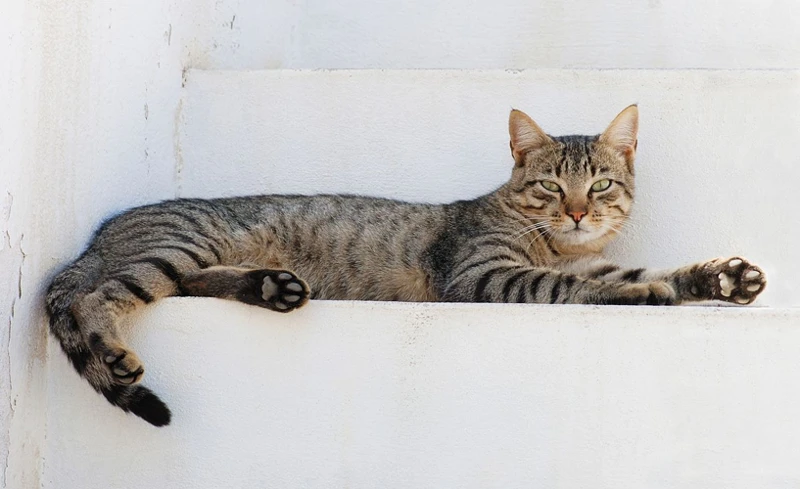
Breeding healthy and genetically sound California Spangled Cats should be a top priority for any responsible breeder or pet owner. This is where the use of pedigree charts comes in handy. Pedigree charts provide a comprehensive picture of a cat’s lineage, including information about its ancestors and genetic traits. By using pedigree charts, breeders can ensure the quality of their breeding program, reduce the risk of inherited health conditions, and promote the preservation and improvement of the breed. In this section, we will explore the various benefits of using pedigree charts when breeding California Spangled Cats.
Ensuring Health and Genetic Quality of the Breed
Creating a pedigree chart for breeding California Spangled Cats can help ensure the health and genetic quality of the breed. By carefully selecting breeding cats with a diverse and healthy genetic background, breeders can avoid breeding cats with known genetic health issues and reduce the likelihood of producing offspring with serious health problems.
One way to identify potential health risks in a breeding cat’s pedigree is to use an html table format to organize pedigree information. This helps breeders easily see which cats in the lineage have been diagnosed with a specific health condition or carry the gene for a particular disorder.
For example, if a breeding cat has a history of polycystic kidney disease in their lineage, a careful review of their pedigree chart can help the breeder determine whether or not this cat is a suitable candidate for breeding. By identifying other cats in the lineage who have also been diagnosed with this disease, breeders can determine how likely it is that the gene for this disease has been passed on to the prospective breeding cat.
Additionally, reviewing the pedigree chart can also help breeders identify genetically diverse cats with healthy backgrounds that would be good candidates for breeding. This can help reduce the likelihood of breeding cats that may be predisposed to certain health conditions, such as heart defects or skin disorders, that are common in some California Spangled Cats lineages.
Having a comprehensive pedigree chart for each breeding cat can help breeders make informed decisions about which cats to breed based on their individual health and genetic backgrounds, as well as help prevent the spread of harmful genes within the breeding population.
Reducing the Risk of Inherited Health Conditions
It is crucial for breeders of California Spangled Cats to reduce the risk of inherited health conditions. By using pedigree charts in breeding, breeders can identify potential health risks and avoid breeding cats with these issues. This will ultimately result in healthier kittens and reduce the risk of congenital diseases.
Here are some ways pedigree charts help breeders reduce the risk of inherited health conditions:
- Identifying Inherited Health Conditions: By analyzing a cat’s pedigree chart, breeders can identify if any of the cats in the lineage have had health issues. This allows breeders to make informed decisions when choosing which cats to breed and which ones to avoid.
- Avoiding Inbreeding: Inbreeding, or breeding closely related cats, can increase the likelihood of genetic disorders. By using pedigree charts, breeders can keep track of the different lineages of their cats to avoid inbreeding.
- Ensuring Genetic Diversity: By expanding their breeding pool and carefully selecting cats with diverse pedigrees, breeders can reduce the risk of inherited health conditions. This can improve the overall health of the breed and increase the lifespan of California Spangled Cats.
- Screening for Genetic Disorders: Pedigree charts can help breeders identify if certain cats in the lineage are carriers of genetic disorders. By testing their cats for genetic disorders, breeders can avoid breeding cats with these conditions, reducing the risk of passing them on to future generations.
Reducing the risk of inherited health conditions is an essential aspect of breeding California Spangled Cats. By using pedigree charts, breeders can identify potential health risks and make informed decisions about which cats to breed. This helps breeders ensure the good health of their cats and improve the overall quality of the breed.
Promoting the Preservation and Improvement of the Breed
Pedigree charts are essential in breeding California Spangled cats, as they promote the preservation and improvement of the breed. By keeping an accurate record of the lineage and ancestry of each cat, breeders can ensure that their breeding program is moving in the right direction towards the ideal California Spangled cat.
Preservation of the Breed
Pedigree charts help preserve the breed by ensuring that each breeding cat is a purebred California Spangled cat. By selecting cats with a history of purebred ancestry, breeders can ensure that their breeding program stays true to the breed’s unique characteristics and qualities.
Pedigree charts can help keep track of the genetic diversity within the breed. Breeders can use the information on the charts to ensure that the cats they breed are not closely related, reducing the risk of inbreeding and promoting genetic diversity.
Improvement of the Breed
With the help of pedigree charts, breeders can identify desirable traits and characteristics that they would like to promote in future litters. Through careful selection and breeding, they can create a line of cats with exceptional qualities that maintain the breed’s unique look and temperament.
Pedigree charts make it easier for breeders to track the dominant and recessive genes in their breeding line. By doing so, they can understand which genes need to be combined to produce the traits they are looking for in their litters.
Here’s an example of a pedigree chart that helps breeders promote the preservation and improvement of the California Spangled cat breed:
| Generation | Male Cat | Female Cat | Pedigree Information |
|---|---|---|---|
| 1st | Gizmo | Mittens | Gizmo and Mittens are both purebred California Spangled cats |
| 2nd | Max | Carla | Max is Gizmo and Mittens’ son; Carla is a purebred California Spangled cat |
| 3rd | Milo | Tina | Milo is Max and Carla’s son; Tina is also a purebred California Spangled cat |
| 4th | Kobe | Jade | Kobe is Milo and Tina’s son; Jade is also a purebred California Spangled cat |
By using this pedigree chart, a breeder can ensure that they are only breeding purebred California Spangled cats and that they maintain the desired characteristics in future generations. They can also use the chart to identify which cats carry desirable traits and which ones may need to be excluded from their breeding program.
Potential Drawbacks of Using Pedigree Charts in Breeding California Spangled Cats
Breeding California Spangled Cats is no easy feat, and every breeder should be aware of both the benefits and drawbacks of using pedigree charts in their breeding programs. While pedigree charts have many advantages in terms of breeding healthy and genetically diverse cats, they also come with some potential drawbacks that need to be considered. In this section, we will explore some of the potential drawbacks of using pedigree charts in breeding California Spangled Cats, and what breeders need to know before incorporating them into their breeding programs.
Limiting Genetic Diversity and Creativity
While pedigree charts can be useful in breeding California Spangled Cats to ensure genetic quality and reduce the risk of inherited health conditions, there are potential drawbacks to relying solely on pedigree information. One of these drawbacks is the risk of limiting genetic diversity and creativity within the breed.
What is Genetic Diversity?
Genetic diversity refers to the variety of genes and traits within a population. Inbreeding, which involves breeding individuals who are closely related, can reduce genetic diversity and increase the risk of genetic disorders. This is because inbreeding can increase the chance of inherited health conditions being passed down from generation to generation.
The Role of Creativity in Breeding
Creativity is also a crucial factor to consider in breeding California Spangled Cats. Breeding for certain desirable traits can lead to a breed that is uniform in appearance but lacks diversity and variability. Over time, this can lead to a breed that is vulnerable to genetic disorders and illnesses.
The Drawbacks of Pedigree Charts in Limiting Genetic Diversity and Creativity
While pedigree charts can reveal the genetic history of cats and uncover any undesirable traits or inbreeding, placing too much emphasis on pedigree charts can limit genetic diversity and creativity. Breeders who rely solely on pedigree charts when selecting breeding cats may inadvertently limit the gene pool and create a uniform breed that lacks diversity. This can lead to genetic disorders and illnesses within the breed.
One way to mitigate this drawback is for breeders to use pedigree charts as a tool rather than a definitive guide. Breeders should focus on selecting cats with healthy genetic backgrounds and traits that complement each other to ensure genetic diversity and creativity within the breed. Additionally, working with professional breeders or geneticists can help breeders strike a balance between using pedigree information and maintaining genetic diversity and creativity within the breed.
| Pros | Cons |
| Ensures genetic quality | May limit genetic diversity |
| Reduces the risk of inherited health conditions | May limit creativity in breeding |
| Promotes preservation and improvement of the breed | May uncover undesirable genetic traits or inbreeding |
While pedigree charts are an essential tool in breeding California Spangled Cats, breeders must be cautious not to rely solely on pedigree information. The risk of limiting genetic diversity and creativity can lead to genetic disorders and illnesses within the breed. Instead, breeders should use pedigree charts as a tool to select cats with healthy genetic backgrounds and traits that complement each other to ensure genetic diversity and creativity within the breed.
Uncovering Undesirable Genetic Traits or Inbreeding
When using pedigree charts to breed California Spangled Cats, it is important to be aware of the potential drawbacks that come with this tool. One such drawback is the possibility of uncovering undesirable genetic traits or inbreeding, which can occur when certain traits are inadvertently passed down from one generation to the next.
One way to address this issue is to use a pedigree chart to track the genetic history of each cat you are considering breeding. This will help you identify any potential genetic issues that may arise, such as genetic diseases or disorders that may be present in certain bloodlines.
In order to avoid inbreeding, it is important to carefully select breeding pairs and ensure that they are not closely related. This can be achieved by reviewing the pedigree charts of both cats and conducting genetic testing to determine their overall health and genetic compatibility.
Another potential drawback of using pedigree charts in cat breeding is the possibility of limiting genetic diversity and creativity. While pedigree charts can help breeders ensure that their cats are healthy and genetically sound, they can also limit the potential for new traits and characteristics to emerge.
To avoid this drawback, breeders should keep in mind that pedigree charts are only one tool in the breeding process. In addition to using these charts, it is important to also conduct genetic testing and breed cats from different bloodlines in order to maintain genetic diversity and ensure that the breed continues to evolve and improve over time.
While pedigree charts can be a useful tool for breeding California Spangled Cats, it is important to be aware of their potential drawbacks. By carefully selecting breeding pairs, conducting genetic testing, and maintaining genetic diversity, breeders can help ensure that their cats are healthy, happy, and genetically sound for generations to come.
Conclusion
In conclusion, understanding pedigree charts is an essential aspect of breeding California Spangled cats or any other breed. It provides valuable information about the genetic history, health, and quality of a cat’s lineage, which can inform breeders’ decisions on which cats to breed and which to avoid.
By creating and researching pedigree charts, breeders can identify desirable traits and genetic diversities in a breed. It also helps in reducing the risk of inherited health conditions and promoting the preservation and improvement of the breed’s health and quality.
However, there are potential drawbacks to using pedigree charts, such as limiting genetic diversity and creativity and uncovering undesirable genetic traits or inbreeding. For breeders to make informed decisions, it is advisable to consult with professional breeders and geneticists to ensure the health and quality of the breed while maintaining genetic diversity.
In conclusion, while there are challenges in breeding cats, utilizing pedigree charts enables breeders to make informed decisions that improve the health and quality of the breed, ensuring its longevity and sustainability. It is crucial to approach the breeding process with care and precision, while maintaining a strong commitment to preserving the best qualities of California Spangled cats for future generations to enjoy.
Frequently Asked Questions
1. What is the purpose of a pedigree chart in breeding California Spangled cats?
A pedigree chart is used to track the ancestry and genetic traits of a particular breed of cat, which can help breeders make informed decisions about which cats to breed with.
2. How do I read a pedigree chart for California Spangled cats?
Start with the oldest generation, which will be at the top of the chart. Each subsequent generation will be below the previous generation. Males are represented by squares while females are represented by circles. Colored shapes denote cats with specific traits.
3. What do the symbols on a pedigree chart mean?
Squares represent males, circles represent females. A colored square or circle means the cat has a specific trait. Arrows show the direction of the chart. Horizontal lines running between a male and female mean that they have produced offspring.
4. How can a pedigree chart help me choose cats to breed?
A pedigree chart can help you identify any desirable traits that a cat may carry, as well as any genetic health conditions that may be a concern. This information can help you make informed decisions about which cats to breed with.
5. Can inbreeding be identified on a pedigree chart?
Yes, inbreeding can be identified on a pedigree chart. If a cat’s parents are closely related, their line on the chart will be represented by a double line.
6. Can you create a pedigree chart without complete information?
While it is possible to create a basic pedigree chart without complete information, it is always recommended to gather as much information as possible about a cat’s ancestry and genetic history. This can help identify any potential health concerns that may be present in future generations.
7. Are there online tools available for creating pedigree charts?
Yes, there are various online tools and software available for creating pedigree charts. These tools can make it easier to document and share pedigree information with other breeders and cat enthusiasts.
8. Is there a limit to how many cats can be included on a pedigree chart?
No, there is no limit to how many cats can be included on a pedigree chart. However, it is important to only include cats that are relevant to the breeding program in question.
9. What are some potential drawbacks of using a pedigree chart in breeding California Spangled cats?
Some potential drawbacks include limiting genetic diversity and creativity, as well as uncovering undesirable genetic traits or inbreeding. It is important to use a pedigree chart as a tool for promoting the health and quality of the breed, rather than solely relying on it for breeding decisions.
10. Can a pedigree chart be used for breeds other than California Spangled cats?
Yes, pedigree charts can be used for any breed of cat or animal. However, it is important to use charts that are specific to the breed in question and to understand the unique traits and genetic history of that particular breed.

